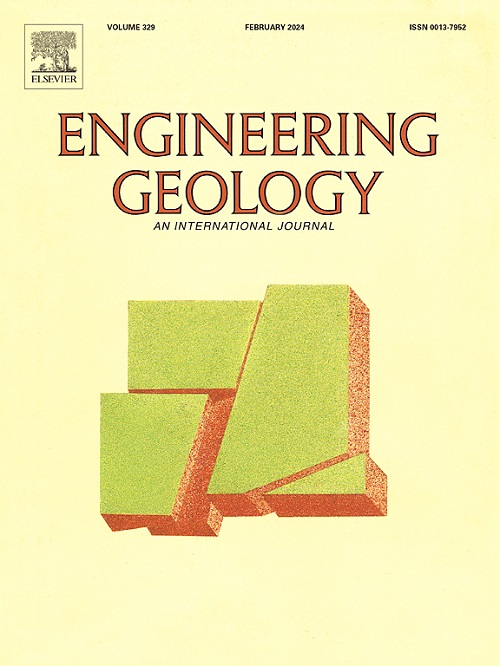The mechanisms of salt weathering responsible for sandstone deterioration in the Yungang Grottoes, China
IF 6.9
1区 工程技术
Q1 ENGINEERING, GEOLOGICAL
引用次数: 0
Abstract
Salt weathering significantly contributes to the deterioration of porous building materials, particularly in stone cultural heritage. However, the origins of salts and water responsible for salt weathering remain poorly understood. This study focuses on the Yungang Grottoes, known for severe salt weathering. We collected 15 salt-bearing rock samples from 8 caves to determine the types of salts, 16 rock powder samples from two horizontal boreholes located in the interior and exterior walls of a seriously deteriorated cave to compare dissolved ions, and 7 rock samples from a horizontal borehole to determine the mineralogy. We found that epsomite (MgSO4·7H2O) is the dominant salt precipitated on the walls of many caves. The source of SO42− is historical air pollution, while the source of Mg2+ is the weathering of ankerite and biotite. The comparable concentrations of dissolved K+ and Li+ in the interior and exterior walls indicate a similar degree of chemical weathering; however, the Ca2+ concentration in the interior wall is significantly lower, indicating processes that have removed Ca. PHREEQC simulation of the precipitation sequence of salts suggests that CaSO4 may have already crystallized historically, which is supported by data reported in the literature. By monitoring vapor concentrations and wall temperatures, we infer that the interior walls are more prone to retain rock moisture, which contributes to both chemical and salt weathering, ultimately accelerating the deterioration of sandstone. These findings provide a scientific basis for the preservation of the grottoes and the mitigation of salt weathering.

求助全文
约1分钟内获得全文
求助全文
来源期刊

Engineering Geology
地学-地球科学综合
CiteScore
13.70
自引率
12.20%
发文量
327
审稿时长
5.6 months
期刊介绍:
Engineering Geology, an international interdisciplinary journal, serves as a bridge between earth sciences and engineering, focusing on geological and geotechnical engineering. It welcomes studies with relevance to engineering, environmental concerns, and safety, catering to engineering geologists with backgrounds in geology or civil/mining engineering. Topics include applied geomorphology, structural geology, geophysics, geochemistry, environmental geology, hydrogeology, land use planning, natural hazards, remote sensing, soil and rock mechanics, and applied geotechnical engineering. The journal provides a platform for research at the intersection of geology and engineering disciplines.
 求助内容:
求助内容: 应助结果提醒方式:
应助结果提醒方式:


